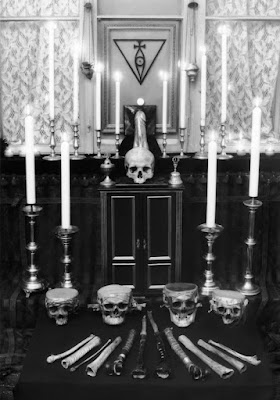Released
on September 26th, 1969, the "sort of" penultimate Beatles LP, Abbey
Road, turns 55 years old today. The confusion of its chronology comes
from the fact that it was recorded after the Get Back/Let It Be
sessions, but released before Let It Be. As such, it represents the
last time the Beatles, as a group, were in a recording studio together
at the same time.
The
background for Abbey Road is inextricably linked with the Get Back
sessions that preceded its recording. The Get Back project had rather
spun off the rails to a large degree, with its plans for a return to the
bands roots, documented in excruciating detail in a planned documentary
film and capped off with an elaborate live performance, undermined as
the group's internal relationships continued to fragment and their
grandiose plans only culminated with a bizarre, albeit infamous,
roof-top live performance atop the EMI recording studios (later renamed
Abbey Road).
Following the
rooftop gig, what would be the last ever live performance by the band,
Paul McCartney suggested a regrouping effort to producer George Martin,
who agreed to the concept with the provision that he be given full
producer authority over the sessions like during the group's earlier
albums. The fragmentation of the group had set in during the so-called
"White Album" sessions, a situation that the Get Back project had meant
to address, but which had only fermented more. Abbey Road was sort of a
last-ditch effort to try to restore a sense of unity in the band, but
even with the best of intentions, some antagonisms were simply too
deeply rooted to extricate.
Lennon's
insistence on including Yoko Ono in the sessions was one such ongoing
source of conflict and consternation in the band. This even extended to
the point where, after Lennon and Ono were in a car crash, resulting in
an injury to Ono, Lennon had a hospital bed installed in the studio to
accommodate her recovery and allow her to continue to observe the band's
activities. Harrison's relationship with the group was also continuing
to strain as he attempted to assert a greater influence on the album's
content. But it wasn't all gritting teeth and exasperation in the
studio. For the most part, the mood was actually mostly cordial and
pleasant much of the time, though the underlying stresses would simply
never entirely abate.
Despite
the percolating tensions, the group's creativity was bolstered by the
use of some cutting edge technology, principally in the form of an eight
track recording system with a solid state mixing console, both of which
helped the group to achieve a far more expansive sound, with the
freedom to explore even more complex overdubbing. The other notable bit
of kit was the MOOG modular synth system that Harrison had purchased
the previous year and used for his sophomore solo release, Electronic
Sound. While the instrument had been used for little more than noodling
effects on that album, by the time it was incorporated into the Abbey
Road sessions, Harrison's prowess with it was sufficient that it became
integrated as proper musical accompaniment and not merely for exotic
sound effects.
For the album's
cover, McCartney had conceived of the idea of a photo of the band
crossing the street outside the EMI studios building at Abbey Road,
which would also give the album its title. Apple Records creative
director John Kosh designed the album cover. It is the only original UK
Beatles album sleeve to show neither the artist name nor the album title
on its front, which was Kosh's idea, despite EMI saying the record
would not sell without this information. He later explained that "we
didn't need to write the band's name on the cover. They were the most
famous band in the world". The iconic image has since gone on to become
one of the most recognized, replicated and imitated group photos to
ever be created. Scores of fans have tried to recreated the photo, and
in 2011, a webcam was installed at the crossing. The cover also helped
stoke the "Paul is dead" conspiracy, with McCartney appearing in the
photo as out of step with the others in the band, holding his cigarette
in the wrong hand, and the only one barefoot, leading to speculation
that these were somehow symbolic of the person in the photo being an
imposter.
The album was released
with virtually no promotional campaign, amid internal disintegration,
with Lennon already having announced his intention to leave and Paul
about to make a public statement of his departure, thus formalizing the
band's dissolution. But promotion wasn't much required as the album
immediately shot to the top of the charts, where it lingered for quite
some time. The group machinery continued to hang on long enough for a
reassessment of the Get Back material, which was put in the hands of
Phil Spector to get it finished while the group disintegrated.
While
the sales for the album were brisk, critical response was mixed, with
some finding the use of the electronics gimmicky and the songwriting
inauthentic. Regardless of this initial ambivalence, retrospectively,
the album has become considered perhaps the band's most lauded and
appreciated release. While it may not have had the conceptual and
cultural impact of Sgt. Pepper, in the long run, aficionados of the band
repeatedly cite the LP as their crowning achievement. Whether that's
the case is a matter of preference in the end.


















